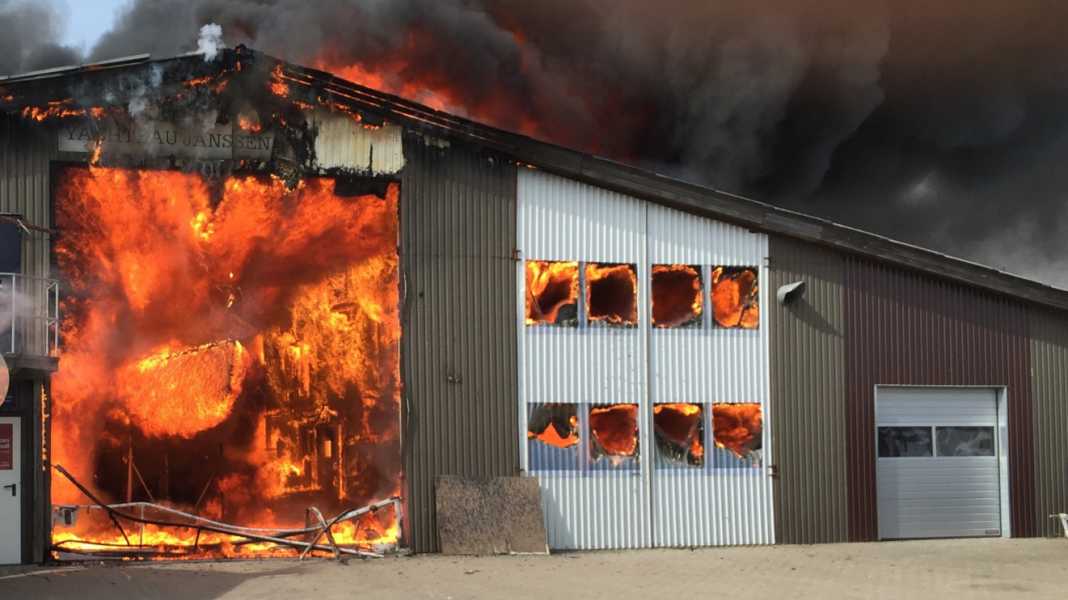
Photos like the one shown above cause owners to panic. Almost every year we report on boat sheds on fire, with many owners losing their valuable vessels to the flames. Sometimes the cause is arson, but often it is the fault of the boat or shed owners themselves.
And indeed: there is hardly a hall, hardly an open-air warehouse without glaring safety gaps - caused by owners who should actually know better. Or by operators who want to save money. What many people don't realise: In the event of damage, the winter storage operator is usually not liable. And all too often, the guilty party cannot be identified after a fire. This means that if you don't have hull insurance for your boat in addition to a liability policy (which should definitely also cover winter storage risks), you will be left empty-handed if the worst comes to the worst.
Smoking
"Smoking and handling fire is prohibited in the hall" - this is almost always clearly posted. And for good reason. Open flames are a frequent cause of fire.
Flammable substances
Flammable liquids, also known as fire accelerants, must not be stored in the ship or anywhere else in the hall. Therefore: petroleum, outboard motor petrol, spirits etc. off board. In addition to being flammable, evaporating petrol and gas are also highly explosive. Whether the fuel tank needs to be emptied must be clarified with the operator of the winter storage facility.
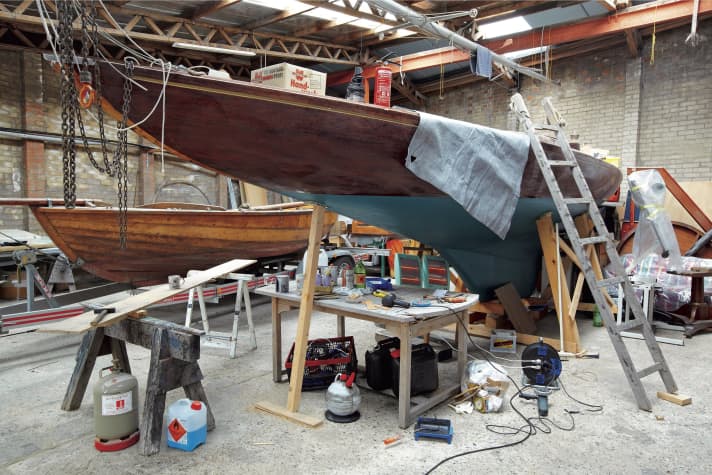
Heating appliances
The operation of gas radiators, fan heaters and radiant heaters, oil stoves and boat heaters is prohibited in winter storage. This also includes heating with oil radiators.
Battery chargers
Batteries may only be charged in sufficiently ventilated rooms. This does not include winter storage sheds. The batteries must be removed and taken home for charging.
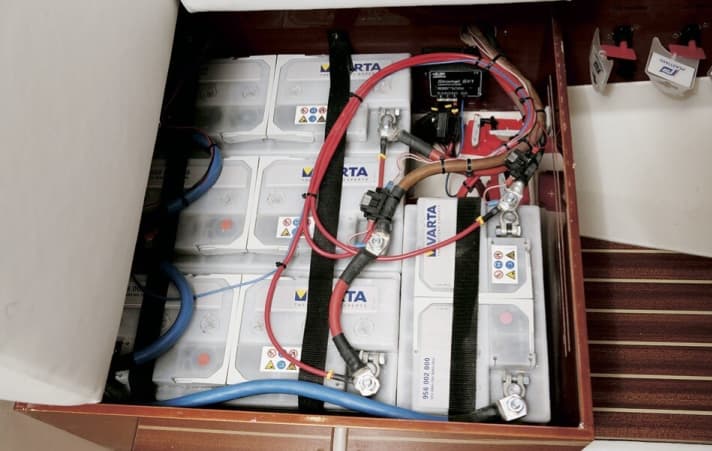
Colours and resins
Residues of paints and adhesives of any kind must be disposed of after work or taken away for storage. Residues of two-component paints and resins in particular can react with each other and become sources of fire.
Waste
Rubbish attracts vermin, spreads mould and foul odours. It can even become a fire hazard, for example if damp cotton cleaning cloths are thrown away. Waste bins must be lockable, ideally with self-closing lids.
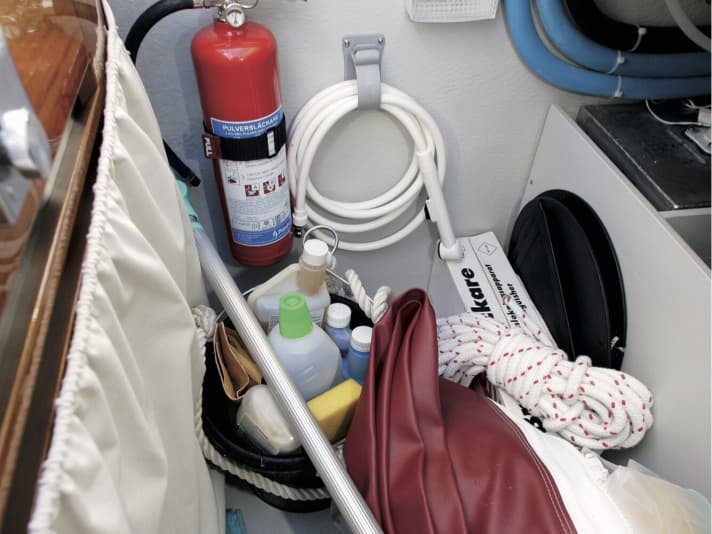
Planning
Easily flammable tarpaulins have no place in winter storage. This is because in the event of a fire, the fire can quickly spread to the covered boats.
Power supply
Great attention must be paid to cables and sockets. If a large number of consumers are in use, the network can quickly become overloaded. If the power supply is not well secured, there is a risk of cable fires. Heavily used tools also often have damaged insulation that needs to be repaired immediately. The power supply to the hall should be automatically disconnected after the specified working hours. If this is not the case, it must be switched off manually. If this is also not possible, the plugs must be pulled from all electrical devices.
Fire extinguisher
One six-kilogram powder extinguisher per 150 square metres should be placed on the hall walls in easily accessible locations. In addition, every owner should place their fire extinguisher within easy reach, for example by hanging it overboard - making sure that it does not obstruct escape routes.
Working platforms
Wobbly home-made scaffolding has already caused torn ligaments and broken bones. Affordable platforms are available on the market, the safety of which has been proven by appropriate certificates such as TÜV.
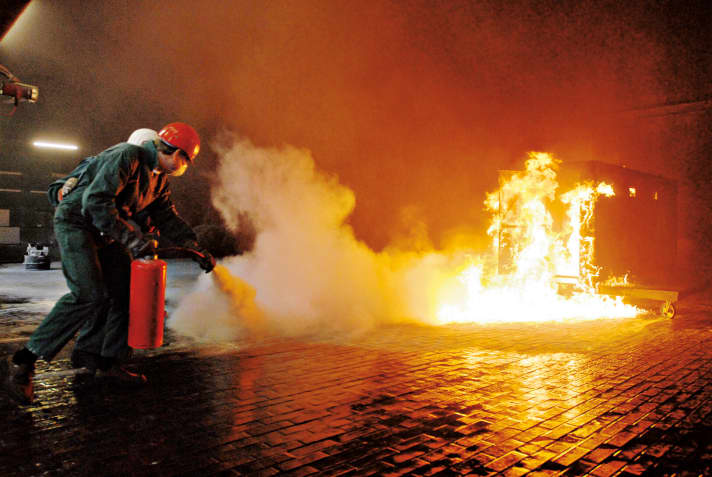
Ladders
The same applies to ladders. This is aggravated by the fact that the rung spacing must allow ergonomic use, which is not necessarily the case with homemade ladders. Particular attention must be paid to stability. Wedges and wooden blocks increase the risk of slipping instead of minimising it. Good ladders have wide supports. They should also be secured to the boat, for example with a lashing to the foot rail or shroud capstan.
Waste oil
Anyone who fails to dispose of replaced oil properly without delay always runs the risk of being prosecuted for an environmental offence if the container is knocked over or leaks for other reasons.
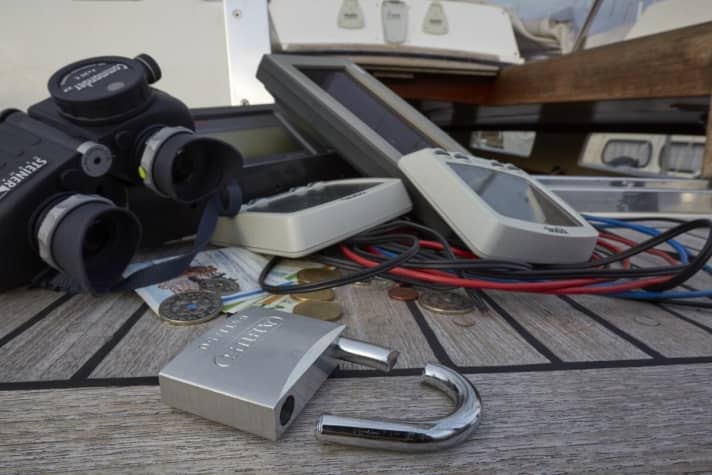
Escape routes
The storage areas must clearly indicate escape routes, which must not be obstructed. This also applies to fire brigade access routes.
Lighting
Both the hall and the outdoor storage area must be adequately lit. In the case of indoor storage, this also includes the outdoor area. The lighting must switch on automatically when it gets dark.
The right insurance for winter storage

Pantaenius claims expert Axel zu Putlitz-Lürmann answers the most important questions about risks in winter storage and optimal insurance cover. Further information about the right insurance is available here.
BOOTE: What damage occurs most frequently during winter storage?
Zu Putlitz-Lürmann: In the open-air warehouse, it is damage caused by rain, snow and storms. In addition, burglary and general transport and storage damage. There is also fire damage in the warehouse.
Who is liable for damage caused when craning or transporting a boat to the storage area?
The crane operator or the carrier. However, please note that damages will only be reimbursed up to the amount of the statutory liability. It is therefore advisable to take out hull insurance for winter storage. This is because there are narrow reimbursement limits for cranes, which are based on the weight of the crane goods.
And who is liable if cranes are erected and transported on their own or by the club?
Every club is covered by liability insurance through the state sports association. However, not all sports associations also cover cranes through their insurance. And if they do, then only the current value is reimbursed in the event of damage. If you crane and transport yourself, you are also responsible for any damage that occurs. You should check carefully beforehand whether this is covered by your own boat insurance.
Can't you save the hull premium in winter? The storage operator should be insured against damage to the ship, right?
Apart from the fact that many storage operators have only insured their warehouse, but not the contents, i.e. the boats, another point is of greater importance: most damage is caused by fires, and these are usually caused by other boats. Then it depends on whether the person causing the damage is insured at all and also whether they can be proven to be at fault. This is rarely the case. If this is the case, only the current value will be reimbursed. The only way to prevent a gap in cover arising in case of doubt is to take out your own hull insurance.
And the equipment stowed below deck, such as cushions, oilskins or the chart plotter?
This is also insured in the locked cabin. Whether it makes sense to leave equipment on board is another question.
Does this also apply to expensive tools, such as grinding machines or industrial hoovers, which are brought into winter storage specifically for the work and are to remain there for a longer period of time?
No. Insurance cover exists solely for the boat, its equipment and accessories. This only includes what is required to use the boat, i.e. what is usually on board throughout the year.
And what about equipment that owners store in the cellar or garage and which is stolen from there or falls victim to a fire?
A good boat hull policy also covers such damage.
What do skippers whose ships are in open storage need to do when a severe storm is imminent so as not to jeopardise their insurance cover?
In cases of force majeure, the ship is always insured. However, to be on the safe side, every owner should always take measures that are self-evident in order to avert or minimise imminent damage.
And how should ships in winter storage be secured against burglary and theft?
Insurance cover is always provided for all cases in which burglars gain access to the stolen goods by force, for example by breaking open the hall doors or boat hatches. Therefore, secure all hatches against complete opening from the outside, even if they are left ajar for ventilation. Lock the companionway hatch. And do not store any equipment on deck, in the cockpit or under the boat. In addition, always ensure that doors and gates to the hall or outdoor storage area are locked.

